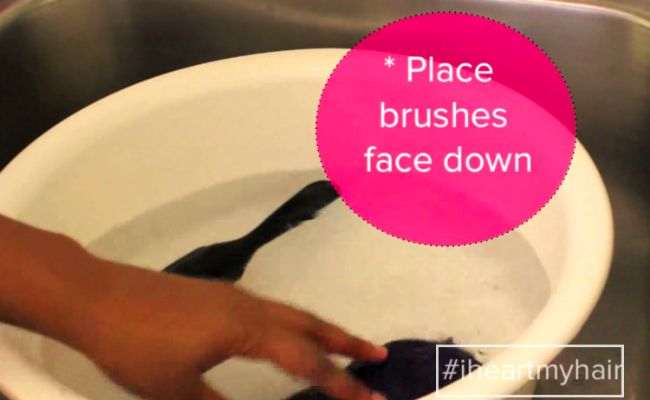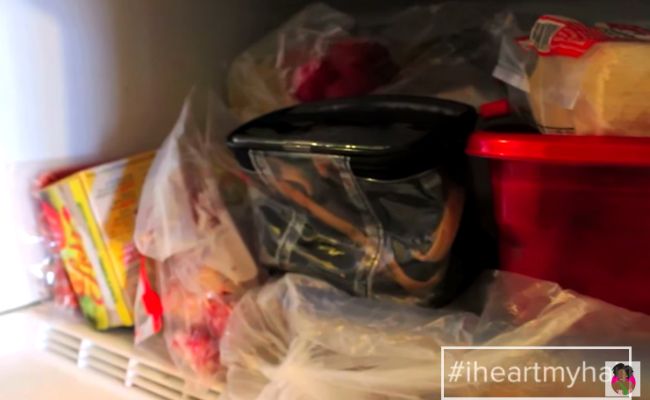
Dandruff, Seborrheic Dermatitis, Folliculitis (ex. Barber’s Itch, Tinea Capitis”> are just a few of the fungus bacteria that dirty hair tools can contribute to in your hair. The frequency with which you cleanse your own hair and scalp should match how often you clean your hair tools. Why use dirty, fungi-infested brushes and combs on hair that you work so hard to keep clean? Aim to dedicate one hair wash day a month to also washing your hair tools.
Cleaning your hair tools is easy and ideally should be done bi-weekly (if you use lots of products and hair tools frequently”> or at least once a month. Oftentimes the products we use leave a residue which can be transferred to the hair and scalp. That residue is easy to see on your heat styling tools, but a similar buildup occurs on the rest of the tools we use as well.
The frequency with which you cleanse your own hair and scalp should match how often you clean your hair tools.
This goes beyond the average comb and brushes to include hair ties, perm rods, flexi rods, hair clamps, clips, and much more. With just a few household ingredients, you can create a dirt-fighting natural cleaner for your hair tools.
DIY Hair Brush Cleaner
- 2 cups white or apple cider vinegar
- 12 drops of tea tree oil
- 1 cup baking soda
- Boiling hot tap water
- Old toothbrush (optional”>
- Few drops of clarifying shampoo (optional”>
1. Start by removing visible debris and hair from all hair tools with a Hair Brush Cleaner and a toothbrush.
2. In a small basin or sink fill with hot water, add vinegar and baking soda along with a few drops of tea tree oil. If you choose to, pour a few drops of a clarifying shampoo on each hair tool.
3. Place all hair tools in solution and leave for anywhere between 15 to 30 minutes. If you do not have a lot of time, start to scrub your hair tools just soon after placing the tools in the solution.
5. Remove your hair tools for the cloudy brown solution, rinse thoroughly at least twice. Leave hair tools out to air dry.
Quick tips
-
The best tool to use to remove hair, debris in a compact bristle brush like the Tangle Teezer is a Hair Brush Cleaner.
-
For hair scarves, silk pillowcases, and nighttime bonnets, wash those with laundry detergent in a regular load of laundry.
-
For the hard to clean hair tools such as bobby pins, hair bands etc. Dr. Oz says to place everything in a plastic bag or a makeup bag, place in the freezer and leave in for 1 hour to overnight.
Watch how I do it
Still not convinced? We understand that hair care is a lot of work, and this is one more step to add. Even if once or twice a month sounds like too much work, at least give this method a try one time – especially if you have never washed your hair tools before. When you clean your tools, you’re potentially avoiding these conditions:
- Dandruff is a common scalp condition that produces itchy scalp, flakes of skin cells appear. Severe dandruff is due to the rapid appearance of new cells that are produced in larger quantities that the dead cells. This causes more shedding and skin cells building on the surface of the scalp.
- Seborrheic Dermatitis is a fungal skin condition that causes inflammation from a yeast due to a build-up of oil secretion on the skin called malassezia.
- Folliculitis (Barber’s Itch or Tinea Barbae”> is caused by bacteria and fungus occasionally getting into the hair follicles giving rise to a skin disorder. This usually affects the upper part of the hair follicle, or deeper skin area surrounding the hair follicle. The symptoms consist of rash, itchiness, redness on the skin, and sometimes, the formation of pus-filled blisters.
When is the last time you cleaned your hair tools?












